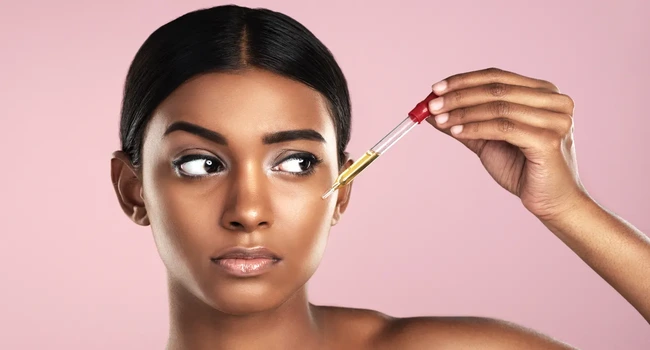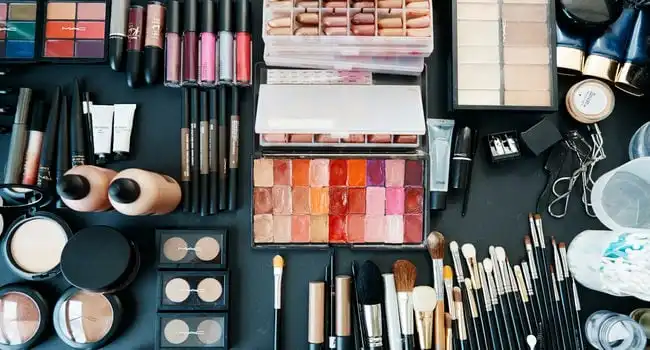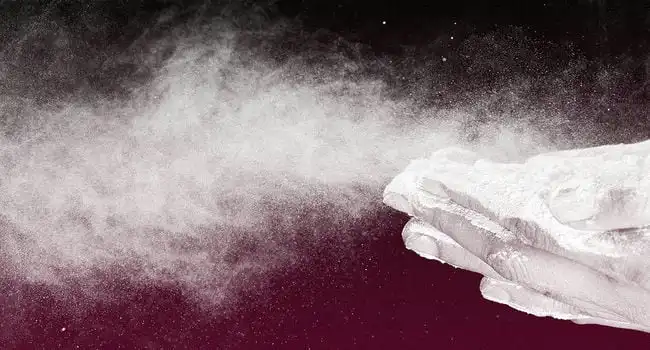Cosmetics are a part of our daily lives, but most of us are unaware of the chemicals lurking in our makeup bags. While some of these ingredients are harmless – think preservatives and emollients – others can be potentially toxic. Here are 10 of the most common chemicals present in makeup products that you should avoid:
10- Oxybenzone

Photo Credit: EWG
The use of toxic chemicals in cosmetics is becoming more and more concerning. Oxybenzone, a chemical found in many products, has been linked to skin irritation and hormone disruption. It is a common ingredient in sunscreen. This chemical has been found to be absorbed into the body, causing potential harm. It has been found in the bloodstreams of 97% of Americans, which is a staggering statistic. Apart from these health concerns, it has also been found to be toxic to coral reefs, leading to bleaching and the destruction of entire ecosystems.
Manufacturers are increasingly being encouraged to find and use safer alternatives. Companies are now required to list oxybenzone on the ingredient labels of their products, so consumers can make informed choices. Consumers can also look for products that are certified organic, as they are more likely to avoid toxic chemicals.
9- Petroleum

Toxic chemicals in cosmetics pose a serious health risk. Petroleum is one of the most commonly found chemicals in cosmetics, used to create a creamy texture. Exposure to petroleum can cause skin irritation and allergies. It also has the potential to clog pores, leading to skin issues such as acne. Long-term exposure may lead to further health concerns, including hormonal imbalances and cancer.
To avoid these risks, consumers must be aware of what they are using and what ingredients are present. It is important to look for products that are labeled “non-toxic” or “natural.” This will ensure that the product does not contain any petroleum-derived ingredients. It is also important to read the label and avoid any products that contain petroleum-based chemicals.
8- Lead

Photo Credit: Times Now
Cosmetics are a part of everyday life, yet many of them contain lead, a toxic chemical. Lead is found in a variety of makeup, from lipsticks to foundations. It can also be present in products such as hair dyes, mascaras, and nail polishes. The presence of lead in these products can be hazardous to our health. Exposure to lead can cause a range of health issues from headaches to organ damage. In some cases, it can even be fatal.
To ensure our safety, it is important to be aware of the potential presence of lead in cosmetics. We should always read the labels of the products we buy carefully to determine if lead is an ingredient. Additionally, we should purchase only products from trusted brands that have been tested for safety and do not contain lead. Taking these steps will help us protect ourselves from the harmful effects of lead in cosmetics.
7- BHA/BHT

Photo Credits: Trichemicals
Cosmetics often contain BHA and BHT, two potentially toxic chemicals. Manufacturers add them to products to extend shelf life. These chemicals can be absorbed by our skin or ingested. BHA and BHT are suspected of being endocrine disruptors. They may interfere with human hormones, leading to organ damage. There is evidence of reproductive and developmental toxicity. BHA and BHT can also cause liver damage and cancer.
This is why many people choose to avoid these ingredients. Some countries have even banned the use of these chemicals in cosmetics. We should all be aware of the potential dangers of these chemicals and take steps to protect ourselves.
6- Triclosan

Triclosan is another toxic chemical found in many beauty products. It is an antimicrobial agent used in personal care products and can be found in toothpaste, soaps, and body washes. Studies have linked this chemical to hormone disruption and antibiotic resistance. Triclosan has been linked to decreased muscle strength and endocrine disruption in animal studies. It can also affect the reproductive system, weaken the immune system and contribute to the development of cancer.
It is believed that triclosan can accumulate in the body over time, leading to potential health risks. The US Food and Drug Administration has warned against its use in soaps and body washes. The European Union has also banned it from being used in wash-off cosmetics. The best way to protect yourself from this chemical is to avoid products that contain it. Be sure to check the ingredients list of your cosmetics for triclosan before you buy them.
5- Fragrance

The fragrance is an often overlooked ingredient in cosmetics. It can be composed of dozens of potentially toxic chemicals that can cause skin, eye, and respiratory irritation. Moreover, many of these ingredients are not disclosed on the label. Thus, it is important to be mindful of what you are putting on your skin.
Consumers should be aware that fragranced products can contain phthalates, which can disrupt hormones. Synthetic musks, such as galaxolide and tonalide, are also commonly found in fragranced cosmetics and may be toxic to the environment. When shopping for cosmetics, check for labels with phrases like “no synthetic fragrances”, “fragrance-free” or “unscented”. Alternatively, look for products that list the individual ingredients, such as natural essential oils, that are used to create the scent.
4- Formaldehyde

Formaldehyde is a toxic chemical used in cosmetics. It can cause skin irritation and allergic reactions. It can also be dangerous if inhaled or ingested. Exposure to formaldehyde can lead to cancer, reproductive issues, and neurological problems. It is used in some nail polishes, shampoos, hair gels, and eyelash glues. It is also used as a preservative in many skincare products. The U.S. Food and Drug Administration warns that formaldehyde can cause skin sensitivity and irritation.
The European Union has banned the use of formaldehyde in cosmetics. Unfortunately, some products still contain it. Consumers should carefully read labels before purchasing cosmetics to ensure formaldehyde is not an ingredient.
3- Talc

Photo Credit: USA Today
Talc is a toxic chemical commonly found in cosmetics. It can cause irritation and long-term damage to the skin. Talc is a mineral composed mainly of magnesium, silicon, and oxygen. It is mined from the earth and then ground into a fine powder. This powder is used in many makeup and skin care products as a filler or absorbent. When applied, talc can clog pores and create an environment in which bacteria and fungi can thrive. In addition, talc can contain asbestos, a known carcinogen. Long-term exposure to asbestos has been linked to serious health risks, including lung cancer and mesothelioma.
2- Phthalates

Phthalates are toxic chemicals present in many cosmetics. They can cause hormone disruption and are known to create reproductive and developmental issues. Cosmetics companies often use phthalates as binding agent and preservative. Unfortunately, they are not listed on the product label, leaving consumers unaware of their presence. Phthalates are absorbed through the skin and accumulate in the body over time. This can increase our exposure to potential health risks.
To avoid phthalates, it is best to look for products labeled “phthalate-free” or “fragrance-free”. Additionally, avoid products with synthetic fragrances and opt for natural alternatives. Natural and organic products are more likely to be free of phthalates. It is also important to read the ingredient list carefully and look for phthalate names such as DEP, DBP, DEHP, and others.
1- Parabens

Parabens are a group of chemicals widely used in cosmetics as preservatives. They can be absorbed through the skin, causing potential health risks. Recent studies have found parabens in breast cancer tumours. These chemicals have been linked to hormonal disruption, allergic reactions and reproductive toxicity. Research has suggested they could play a role in early puberty in girls and interfere with male reproductive functions. Parabens have also been associated with increased risk of infertility, immunotoxicity and even cancer. This has led to an increasing demand for natural and paraben-free cosmetics.


